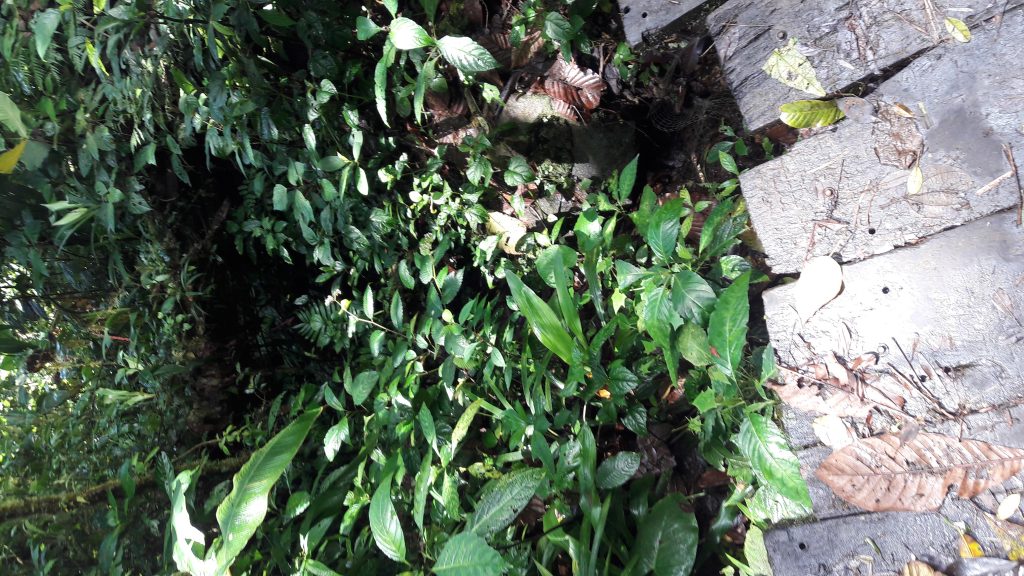On Christmas Day this year, we decided to do something entirely different. We took our small family, went into the mountains and had a very low-key Christmas. We decided to connect with nature and went on a long hike up the side of a mountain in Monteverde. The oxygen was fresh and pure, the exercise was hard and pleasurable, the time a memorable one that will be ingrained in permanent memories.
That being said, I wanted to do some light informal testing on motor skill and aerobic/anaerobic capacity while there, for a number of reasons. I haven’t trained seriously in over a year, solely upkeep. I’m 46 now and haven’t “taken the car out for a spin” to see what works and what doesn’t – translation: what I’ve lost, if anything. I wanted to do some testing with some asterisks. Here’s what I uncovered along the path:
-My state was a little jittery and off. 2 cups of coffee in the morning, not eating a lot left me shaky and a little dizzy. (could also have been the elevation/altitude – 5,900 feet/1800 meters, double to what I’ve become accustomed to)
-I forgot my running/hiking shoes at home, had only loafers and casual dress-jacket, 2 long-sleeved shirts, and khakis on – I know, tactical fail but, in all fairness, we didn’t know leading-up there’d be such a wonderful nature trail to tackle.
-There were colder temps as it was in the mountains, 10-12 degrees Celsius, cold wind, inevitably it felt like a Manitoba fall day.
-I went on a particularly-difficult stretch of the 3 km trail after doing pretty well exploding on a shorter, less-steep stretch. This one was straight up the mountain with steep ascents and only one short levelling-off stretch.
-I started counting steps about a-third-to-half of the way down and got to 503, so we’ll say there were roughly 750 steps, 1500 if including both directions, up and down.
-I “walked” at maximum pace, as fast as I was capable of exerting and maintaining pace, not pulling back in any way or saving gas for the way down. I stopped briefly for 5 seconds at one point when the path became extremely steep in angle. Think speed-walking but without the uncool little hyper-steps.
-I got “rubber-leg” about a-third of the way back down and had to be a little more attentive about not tripping (long fall down with short/steep steps and minimal bracing points, no railings) or losing my balance. Near the end, I did push harder to see how my coordination and balance were holding up.
-My cardio-system and mental-determination were far superior to my muscle-fatigue/stamina. As the pain started setting in noticeably, and I had to strain somewhat to keep full motion and maintain speed, I noticed my breathing, heartrate, and mental-state were predominantly unchanged. There were the little nagging doubts about current shape, capability, injuries present but they were pushed aside pretty quickly as I remembered prior experience(s) and capability and confidence took over. (The familiar is always less daunting and more conquerable)
-The breathing system I’ve used for years was highly-functional. A solid breathing method may not replace a poor cardiovascular system or conditioned stamina…but it can sure hold it off or mask it for a while. My wife even noted it helped her immensely, to the point she was surprised at how much – how quickly she recovered, how much longer she could go before recuperating, how strong her lungs felt. So that’s some positive reinforcement from someone who doesn’t drink my Kool-Aid. Quick recovery, always in-control of breathing rhythm, measured it with steps-taken, alterations between deep-breathing, slight pauses, panic-breathing depending on exertion, climb-difficulty, and recovery period.

-After finishing the hell climb, I continued at maximum pace and thought I’d test my fine-motor skills, as they seemed to be pseudo-altered from the exertion. While not maximized, I a) practiced deployment (one of the knives I had was a small folder, perfect for fine- and complex-motor-testing) while moving, in-advance of coming up on distracted birdwatchers (and subtly closing it with one hand as well when passing), b) getting off my backpack and unzipping the front pouch to access another blade subtly, and c) getting off my backpack and deploying the folder simultaneously. All while moving and exerting. Some (minimal) fine-motor problems but, all-in-all, achievable. (and noting openly that pressured-stress from exertion from strenuous exercise is NOT the same as pressured-stress from another human being trying to take your head off)
-I found even with the loafers, I seemed to have better weight distribution, balance, and feel for quick changes as needed in foot placement when something gave way or felt collapsible. (I dunno, qi gong/tai chi, FMA, really, not sure, but I do know I’ve many of those same sensations in past TMA training so I’d hazard a guess it did help more than a little)
-In the recovery stage, I’d say it took upwards of an hour to get fully rid of the rubber-leg I felt. Normal fine-motor skill accessibility far sooner, likely 15 minutes after I stopped. My calves were moderately sore a while after the workout, more so the next day but all else was pretty good, noting I used (sometimes exaggerated full-body motions during so that all my muscles were working in-unison) My breathing was never greatly-strained – no panting, no gasping, no hyper-ventilating and I’d say bluntly that that was no small coincidence in performance confidence.
-I think the one major lesson to learn from this is confidence in capability and knowledge of your own maximum limits. As my condition was a little unknown after the last year of relative inactivity, I admit to being a little unsure and self-doubting at the beginning. As the day wore on, the old feelings returned, memory of past limits set in, and I started to test those limits actively more and more. By the end, I became completely familiar with my own maximum exertion capability and relaxed comfort and mental fortitude started taking over. I’d say there’s no small comparison to things combative and martial to be taken from this.
-Physical condition alone, coherence of limits and extent of how far one can push oneself, mental determinaton, and confidence in one’s ability to test further than those limits… are no small things in physical fight capability, formal training or not.
-As a final point, breathing may not increase or improve stamina itself, but it sure does aid in maximizing the stamina you have already built up.



:max_bytes(150000):strip_icc()/MissionStatement4-56a82f915f9b58b7d0f16217.jpg)





